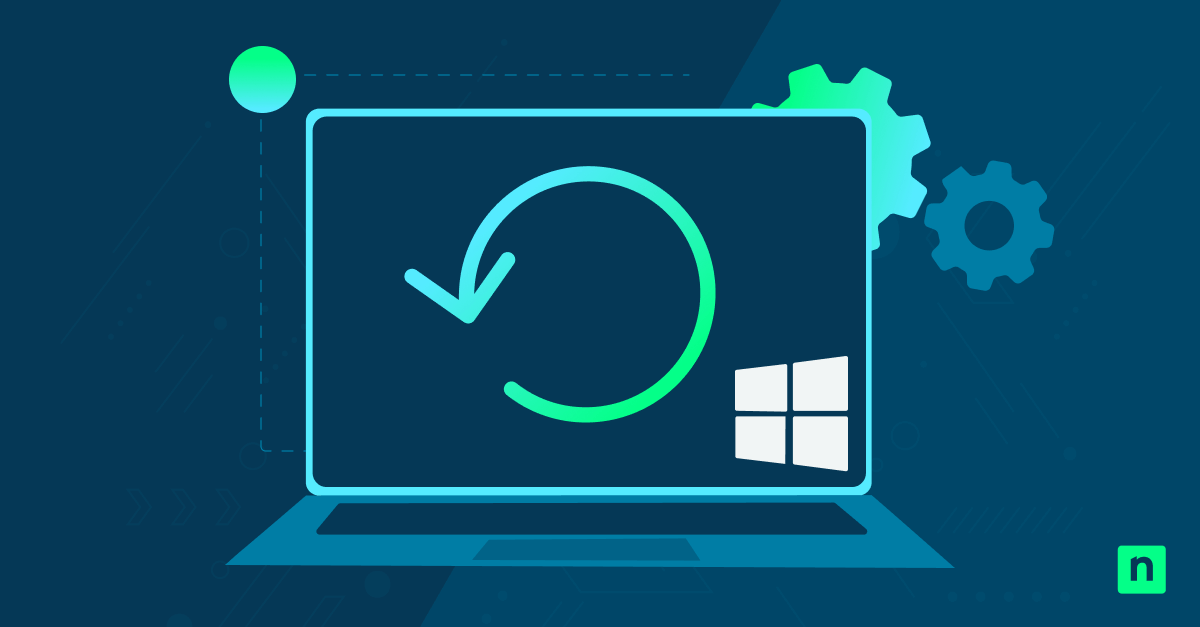So you’re searching on how to configure Windows 10 wake timers. What are they? Windows 10 wake timers are the silent orchestrators of your system’s sleep and wake cycles. Whether you need to disable wake timers for uninterrupted operation or create automated wake schedules, understanding these power management tools helps you maintain control over your PC’s behavior.
Fundamentals of Windows 10 wake timers
Wake timers play an important role in modern Windows power management, acting as the scheduling engine behind system maintenance and updates. Let’s look at how they work.
What wake timers actually control
Windows 10 wake timers are automated triggers that transition your system between power states. Unlike manual wake events or device signals, wake timers operate on precise schedules to make sure tasks complete even when systems are in low-power states.
- Maintenance tasks launch during configured maintenance windows.
- Windows Update coordinates system patches and security updates.
- Backup solutions execute according to defined schedules.
- System health checks run at predetermined intervals.
System processes that use timers
Core Windows services rely on wake timers to maintain system health. The Task Scheduler integrates deeply with the timer framework, allowing both system and user-defined tasks to wake your computer at specified times. These scheduled operations allow your systems to stay current and secure.
Default timer behaviors
When you create wake timer Windows 10 configurations, they inherit settings from your active power plan. By default, Windows enables wake timers for both AC and battery power modes, though behavior varies based on power plan selection:
- Balanced plans allow maintenance wake timers.
- High performance enables all wake timers.
- Power saver restricts timer activity.
Power plan relationships
Wake timers function differently depending on the active power plan in Windows. For example, Power Saver often disables wake timers to conserve energy, while Balanced selectively enables them for critical tasks, and High Performance fully enables them for uninterrupted task completion. Choosing the right power plan ensures maintenance tasks run on schedule while balancing energy use and system requirements.
Methods to disable wake timers Windows 10
Taking control of wake timers helps prevent unwanted system activations while preserving maintenance functions. Windows 10 provides multiple approaches to disable wake timers, each offering different levels of granular control.
Use power plan settings
The Power Options control panel is a simple way to manage wake timers. Navigate to Advanced Power Settings to find wake timer configurations for both battery and AC power modes:
- Disable maintenance timers to prevent automated system wake-ups.
- Configure custom power schemes for specific operational needs.
- Set device-specific wake restrictions based on power state.
- Implement separate policies for battery and AC operation.
Modify Group Policy
Group Policy provides centralized wake timer management for enterprises. Access these settings through the Group Policy Editor under “Computer Configuration > Administrative Templates > System > Power Management > Sleep Settings.”
Registry configuration options
Advanced administrators can directly modify wake timer behavior through the Windows Registry. Navigate to “HKEY_LOCAL_MACHINE\SYSTEM\CurrentControlSet\Control\Power” to access timer configurations. However, use caution when implementing registry changes, as incorrect modifications can impact system stability.
Command-line approaches
PowerShell and Command Prompt provide direct access to wake timer settings. Top commands include:
- powercfg /waketimers to display all active wake timers.
- powercfg /sleepstudy to analyze timer impact on sleep states.
- powercfg /devicequery wake_armed to identify timer-enabled devices.
- powercfg /change to modify timer behaviors through scripts.
By implementing these methods strategically, administrators can disable wake timers in Windows 10 while maintaining system functions.
How to create a wake timer automation in Windows 10
Windows 10’s wake timer capabilities give you precise control over when your systems activate so you can optimize resource usage across your infrastructure. Here’s how to set up automatic systems wake-up schedules.
Set scheduled wake events
First, navigate to Task Scheduler to establish your wake patterns and conditions.
You’ll want to:
- Define wake triggers based on specific time intervals or system events.
- Configure retry settings for missed maintenance windows.
- Set expiration policies for temporary wake schedules.
Configure maintenance windows
To make sure that your computer is awake and ready for scheduled maintenance, set up wake timers in Windows 10 that align with your organization’s maintenance windows. This will allow your updates, backups, or system tasks to occur as planned without interruptions.
Design your maintenance schedule to fit within organizational backup routines and avoid conflicts with peak usage times. For global deployments, account for time zone differences and regional work patterns to maintain consistency.
Program update schedules
Windows Update relies heavily on wake timers to maintain system security. Design update schedules that balance security requirements with operational needs during off-peak hours. Many updates may require deadline-based wake triggers, while regular updates can follow a more flexible schedule that minimizes network impact.
Update considerations:
- Create staged rollouts to manage network load.
- Configure fallback periods for failed attempts.
- Monitor update completion rates.
Set backup timers
Backup operations require careful wake timer coordination to promote data protection without disrupting business operations. Enterprise environments benefit from staggered wake events that prevent network congestion during backup windows. Monitor completion status to adjust wake durations dynamically while maintaining separate schedules for incremental and full backups.
Enterprise-wide wake timer deployment strategies
Large organizations must balance standardization with flexibility when deploying wake timers. Follow these suggestions to keep your wake timer standards aligned across devices.
Standardize wake policies
Create baseline wake timer configurations that address common operational needs. Begin by analyzing wake patterns across different departments and user roles. Build standardized policies that accommodate:
- Mission-critical maintenance windows aligned with business hours.
- Department-specific update schedules that prevent productivity disruption.
- Regional compliance requirements affecting system availability.
- Power consumption targets across your device fleet.
Monitor timer effectiveness
Deploy monitoring tools that track wake success rates and identify potential conflicts between competing timer policies. Real-time monitoring helps prevent cascade failures where missed wake events trigger resource bottlenecks during subsequent maintenance windows.
Focus your monitoring on performance metrics that directly impact business operations. Analyze wake patterns against help desk tickets to identify correlations between timer configurations and system issues. This data-driven approach enables continuous refinement of your wake management strategy.
Manage exceptions
While standardization drives efficiency, certain systems require custom wake timer configurations. Development environments, customer-facing servers, and specialized workstations often need tailored wake schedules. Create an exception management framework that:
- Documents approved deviations from standard policies
- Tracks custom configuration lifecycles
- Validates exception requests against business requirements
- Reviews exceptions quarterly for continued necessity
Maintain compliance
Wake timer management plays a prominent role in maintaining compliance with power management policies and security requirements. Regular compliance checks should evaluate timer configurations against established baselines while documenting any deviations.
Create detailed audit trails showing:
- Timer modification history
- Approval workflows for configuration changes
- Impact assessments for policy updates
- Remediation steps for non-compliant systems
Take charge of system efficiency
Managing wake timers and system states across your Windows infrastructure adds another layer of complexity to IT operations. While Windows 10 provides great tools to create wake timer configurations and monitor system behavior, enterprise environments demand a more comprehensive approach.
Transform your device management strategy with NinjaOne’s remote management platform. Start your free trial today and discover how NinjaOne streamlines Windows management through a single, powerful interface that puts you in control of your infrastructure.








